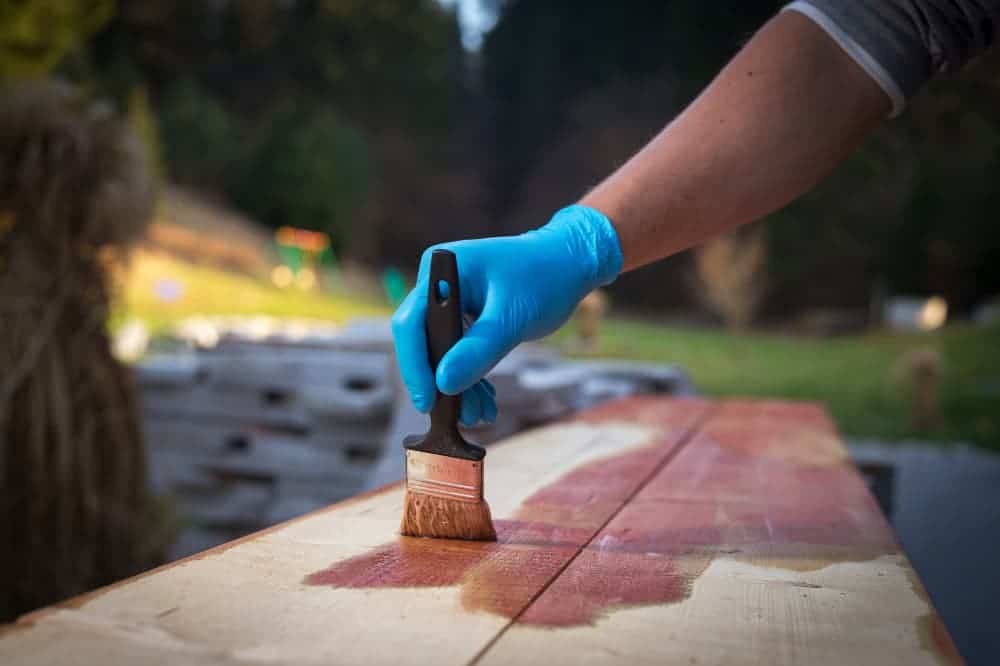When it comes to woodworking projects, you have a few options when it comes to the type of lumber you use. You can buy rough-cut lumber, which is wood in its raw form, or you can buy finished lumber, which has already been cut, shaped, and sanded. Which type of lumber should you use for your project?
It depends on the type of wood and project you’re doing and the look you’re going for. In this blog, we’ll take a look at the differences between rough cut vs finished lumber and discuss which one is better for your project.

Finished Lumber
Finished lumber is wood that has been cut, sanded, and shaped to a specific size and thickness. Finished lumber is also commonly known as dimensional lumber. It is usually more expensive than rough-cut lumber because it requires more work to prepare. When referring to finished lumber, sometimes the term s4s is used. S4s stands for “surfaced 4 sides”, meaning that the board has been finished on 4 of the sides. This provides 4 smooth, visually appealing surfaces that can then be painted, sanded, or stained to further improve the look of the finished product. When you think of a standard 2×4 board, that is finished lumber.
When measuring finished lumber, the boards are referred to as their nominal size, which is the size of the board before it was finished on all 4 sides. The actual size of the boards is slightly smaller. For example, a 2×4 is actually 1-1/2″ x 3-1/2″ due to the finishing process. This is crucial when building a cut list and planning for an upcoming project. Unless specifically noted otherwise, finished lumber is used as framing lumber.
Advantages of Finished Lumber
The main advantage of using finished lumber is that it is easier to work with. It is smoother and less prone to splintering and cracking. This makes it great for projects that require precise measurements and a smooth finish. It can also be pressure-treated to be used in applications where it may come into contact with moisture or the environment for extended periods.
Disadvantages of Finished Lumber
The main disadvantage of using finished lumber is that it is less versatile. You can’t shape it or sand it as much as you can with rough-cut lumber. This makes it less suitable for custom projects or for those who want to experiment with different finishes.
The final thickness of finished lumber is also smaller than stated, so more care must be taken when calculating cuts and selecting detail pieces. For instance, if a true 6×6 cedar post is used for deck construction, then a true 6×6 post cap must also be used to cover the top.
What Is Rough Cut Lumber?
Rough-cut, or rough-sawn, lumber is wood that has been cut directly from logs. It is usually cut to a specific size, width, and thickness, but it is not sanded or shaped in any way. It is often cheaper than finished lumber because it requires less work to prepare. Because all lumber is referred to by its dimensions before it is finished, a piece of rough-sawn wood may be referred to as “true”, such as a “true 6×6 post” or a “true 2×4”.
Advantages of Rough Cut Lumber
The main advantage of using rough-cut lumber is that it is more versatile. You can shape it, sand it, and finish it however you like. This makes it great for custom projects or for those who want to experiment with different finishes. For aesthetic applications like exposed beams, mantles, or posts, rough cut wood has a rustic look that cannot be replicated, due to the impressions and saw marks left over from the initial mill of the log. Another noteworthy benefit of using rough sawn lumber is that it is more resilient than finished lumber. Because it still has some of its natural finish and is thicker than its finished form, it has an increased resistance to insects, moisture, and sunlight. This makes it an ideal option for outdoor uses where pressure-treated lumber is not an option, such as rough cut tongue and groove paneling for walls and ceilings.
Disadvantages of Rough Cut Lumber
The main disadvantage of using rough-cut lumber is that it can be difficult to work with. It is not as smooth as finished lumber and it requires more time, money and effort to shape and sand. It is also more prone to splintering and cracking. Buying rough sawn lumber also means buying heavier lumber, so make sure that the extra weight is accounted for when selecting a vehicle to haul. Unless specified, rough sawn lumber has not been kiln-dried, meaning there will be more moisture in the wood. This can lead to more warping or bending of the wood if it is not properly dried or acclimated to its environment.
Treating Rough Sawn Lumber For Outdoor Use
Treating rough cut lumber for outdoor use involves a series of crucial steps to ensure its longevity and resilience against the elements. Begin by allowing the lumber to acclimate to the outdoor environment where it will be used for a few weeks, which helps reduce moisture content and minimizes the risk of warping or cracking. Next, apply a high-quality wood preservative or water repellent to all sides of the lumber, paying particular attention to end grains.
A number of treatment options are available, such as:
- Exterior paint
- Stain and sealer
- Epoxy
- Wood Oil
Historically, many different things have been used to prepare lumber for use outdoors, including pine tar, which is still used today. The type of treatment you select should be based upon the factors you are trying to protect against, such as sunlight, insects, moisture, or extreme temperatures.
Consider using a penetrating oil-based stain or sealant with UV protection to safeguard the wood from sun damage and fading. Sand the surfaces gently to smooth any rough spots, and ensure proper drainage by slightly angling horizontal surfaces. Regular maintenance, such as reapplying sealants and conducting inspections, is essential to prolong the life of the treated rough cut lumber and maintain its structural integrity in outdoor settings.
For more information on the best choice of wood to use outdoors, check out our blog “What is the Best Wood for Outdoor Use”?

Which is Better for Your Project?
When deciding which type of lumber to use for your project, it’s important to consider the type of furniture or project you’re doing and the look you’re going for. If you’re doing a project that requires precise measurements and a smooth finish, then finished lumber is probably the better option.
If you’re doing a custom project or want to experiment with different finishes, then rough-cut lumber is probably the better option. No matter which type of lumber you choose, it’s important to take the time to do it right. Take the time to measure and cut your pieces accurately, sand them smooth, and finish them properly. Doing so will ensure that your project looks great and lasts for years to come.
Where Can I Buy Rough Sawn Lumber?
The best places for buying wood of any kind are local lumber yards. Only there will you find knowledgeable carpenters who can help answer your questions, high-quality lumber with fewer bends and less warping, and more competitive pricing. They also carry a much wider variety of lumber than the big box stores. For those looking to save money on building material, rough-sawn timber, or quarter-sawn lumber, skip the lower-grade lumber and buy wood from a lumber mill or lumber yard.
If you are in the Raleigh, North Carolina area, you’re in luck. Capitol City Lumber has been the go-to lumber yard for homeowners, furniture makers, toy crafters, and artisan woodworkers for over 75 years. We offer custom sizes, in-house cutting services, and decades of woodworking experience. Whether you need one board or 1 thousand, we will make sure each one is the perfect board for your next project. You can browse our huge selection of specialty wood and finishing products, get a quote for your materials list online, or you can call us at 919-832-6492.



